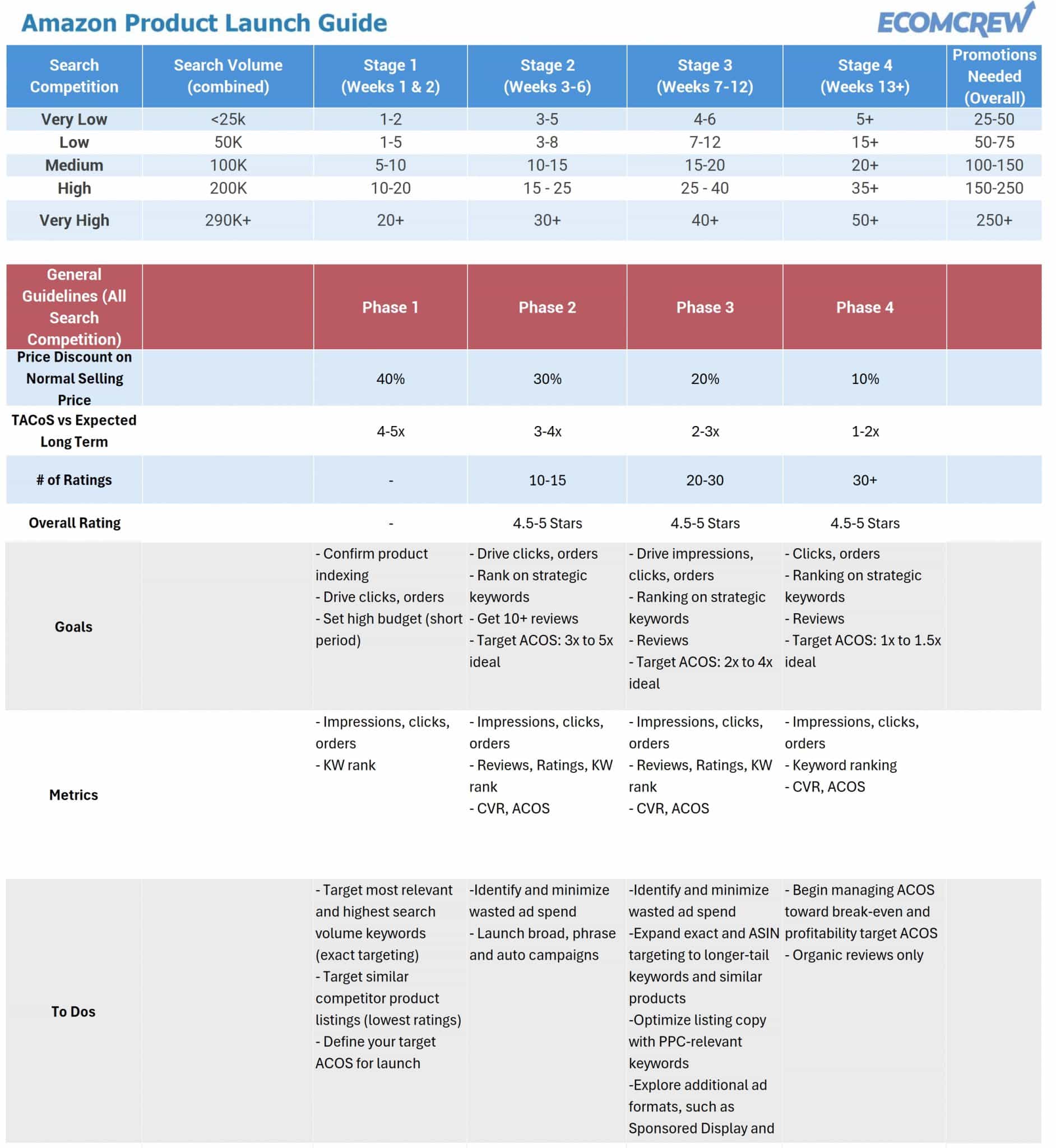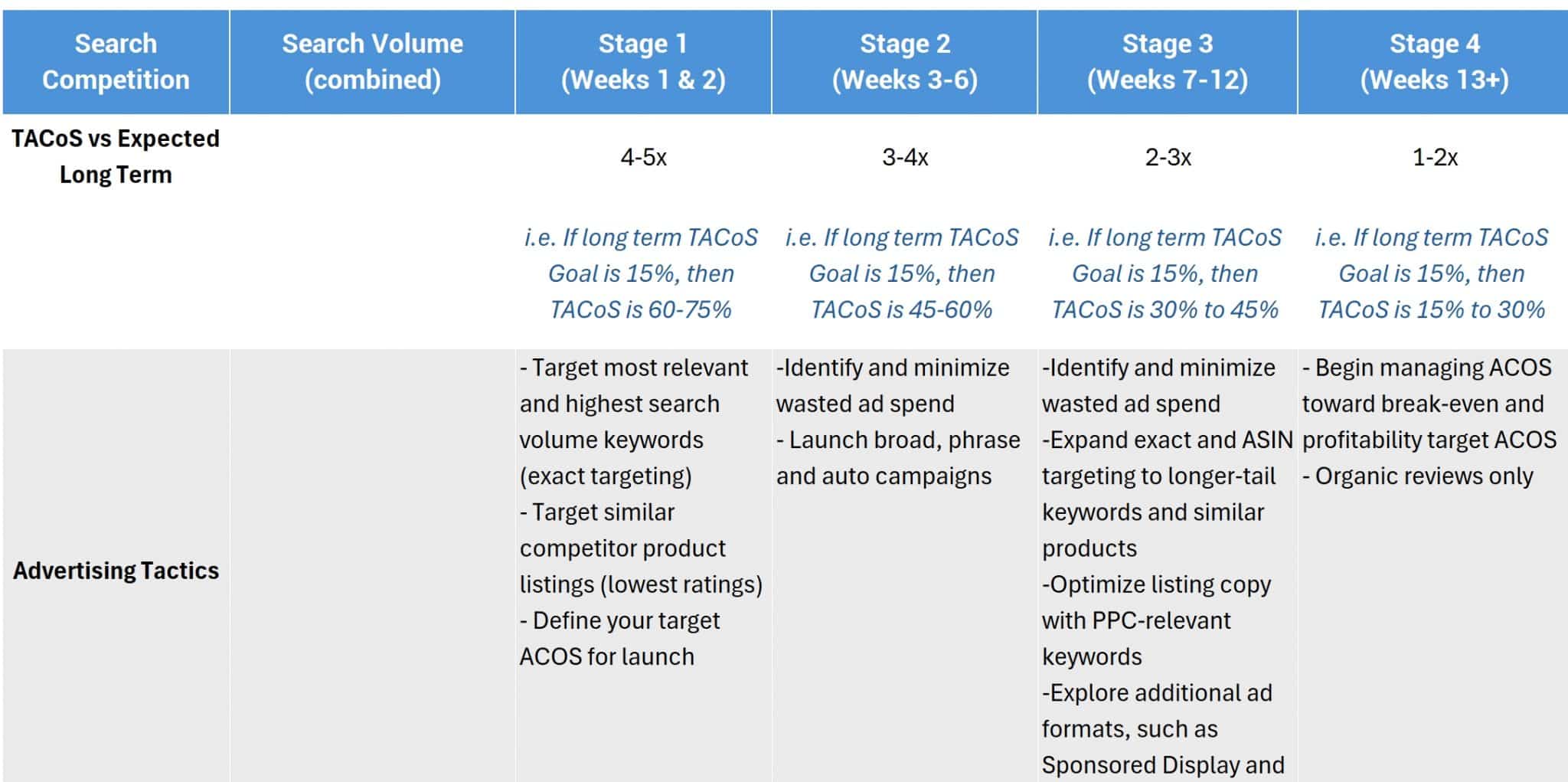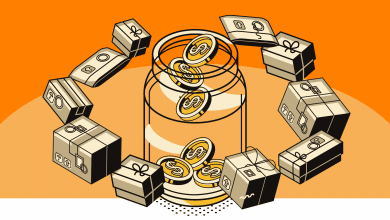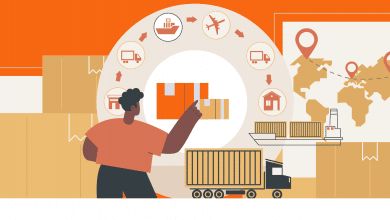The No B.S. Amazon Product Launch Guide for 2025
A new year is upon us, which means another year of product launches.
Product launch strategies have shifted significantly over the last several years. In this article, I'll detail the best practices for launching a new product (or reviving an old one), focusing on the first several weeks of the launch.
Overview of Amazon Product Launch Strategy
Basically, there are a few things you need to do:
- Optimize your listing with Helium 10, DataDive, Jungle Scout, or another tool
- Give away a ton of products
- Be aggressive with PPC spend, especially early
- Maintain that velocity
Most of you are visual, so here's an overview of the strategy in a chart.
Giveaway Products Depending on Competitiveness
Basically, for this launch strategy to work, you need to give away a bunch of products, and how many depends on the competitiveness of your keyword. I'm sorry – that's just the reality of launching on Amazon today.
How many? Here's a rough guide.

How many products you need to give away depends on the competitiveness of your product.
The lower the competition, the fewer promotions/giveaways are needed. Of course, the more competitive the market, the more giveaways are required. Here's a rough approximation:
- Very Low Competition: Promotions Needed: 25-50
- Low Competition: Promotions Needed: 50-75
- Medium Competition: Promotions Needed: 100-150
- High Competition: Promotions Needed: 150-250
- Very High Competition: 250+ promotions
How do you give away your products? That's up to you. There are tons of services. JoinBrands (and for generating EBC), Sellico, ViralLaunch, or promote it to your list – you pick. Obviously, the closer the sale is to full price, the better.
How TOS-compliant is giving away products? Either completely TOS-compliant or not, depending on how any applicable discount is handled. I'll leave that up to your risk tolerance.
Optimize Your Listing Before Launch
Needless to say, optimize your listing before you even think about giving a product away.
Build your master keyword list using your tool of choice – whether it's Helium 10, DataDive, or Jungle Scout. I'm not biased – those are affiliate links for all of them. :)
I won't go into the details of optimizing your listing with your keywords – it's the usual stuff: keywords in titles, bullets, backend keywords, etc.
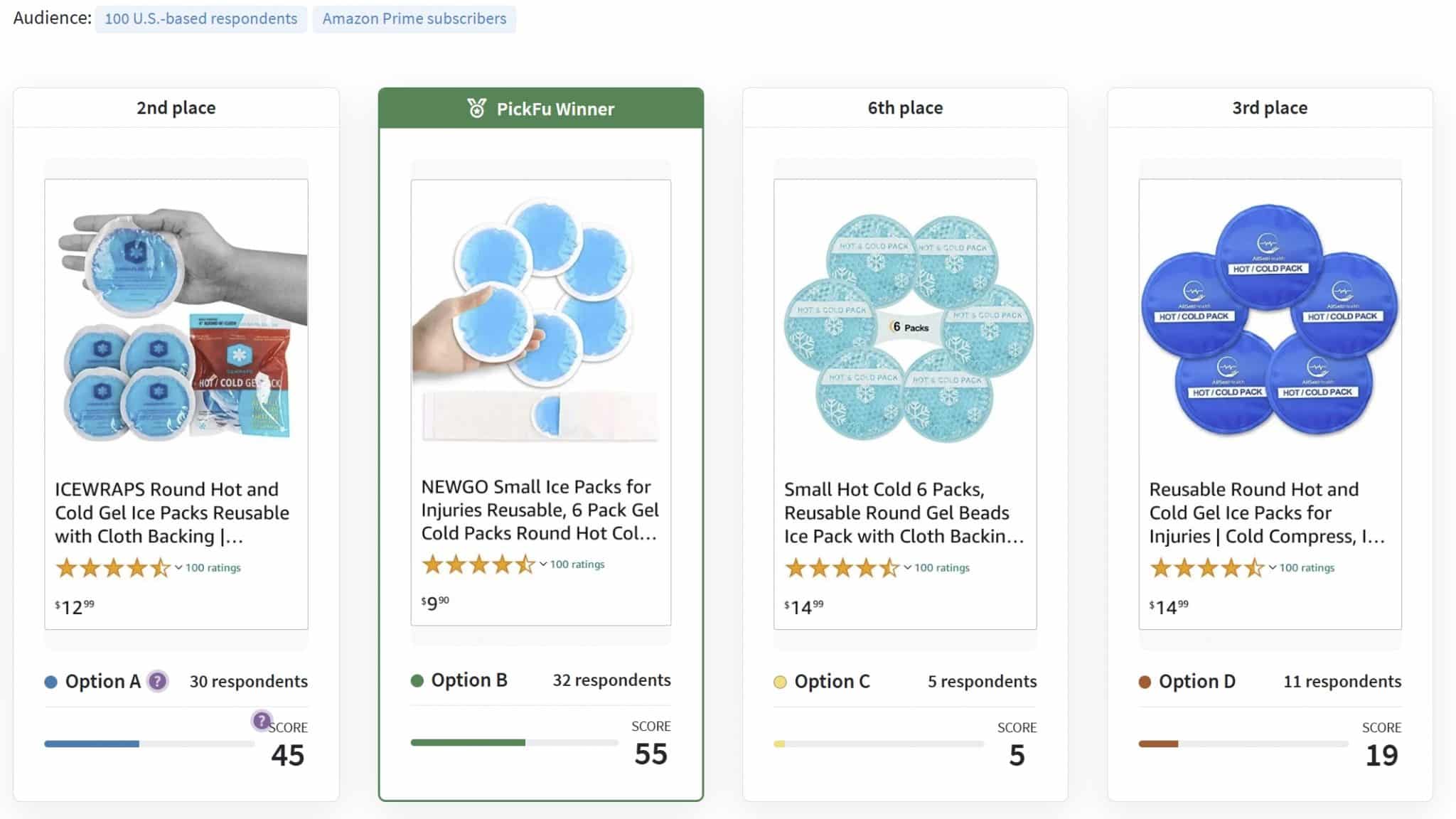
Use a service like PickFU to A/B test your main gallery image before launch.
I also highly recommend that you A/B test your main gallery images against your competitors to see which ones customers prefer. Don't wait several weeks until you have enough traffic to do this directly on Amazon. Do it through a service like PickFU first.
PPC Strategy During Launch
Sellers always wonder how much they should be spending on PPC during launch. The answer is a lot.
Basically, set out what your long-term TACoS (Total Advertising Cost of Sale) is. If it's 15%, then you should be spending upwards of 75% during weeks 1 and 2 of your launch. Yep – it's a lot. However, after 7-12 weeks, you should be pushing toward your long-term TACoS goal.
In the first few weeks of your launch, you want your PPC targeting to be as narrow (i.e., exact keyword targeting) and with high bids, then gradually widen it to include broad, phrase, auto, and perhaps other ad types like Sponsored Brands and Display.
After about 13 weeks, you can trim back your PPC and work towards profitability.
Getting Reviews During Launch
Part of the reason your TACoS will be so high during launch is that you'll have minimal reviews. More reviews (and higher ratings) will result in higher conversion rates and lower ACoS.
I'm not going to judge your review strategy. Generally, except for the most competitive categories, a ton of product promotions and sales plus Vine will be enough to seed your listing with a sustainable amount of reviews… but again, your review strategy depends on your risk tolerance level.
By weeks 3-6, you want to have at least 10 reviews. After about 12 weeks, you want to have at least 30 reviews, and your reviews should be purely organic. Needless to say, your rating needs to be 4.5 stars or above (with 4 being a floor in a very few number of categories). If it's lower than this, you need to incorporate the feedback you're receiving into a new product launch.
Conclusion & Maintaining Velocity
Essentially, for the first 3 months of a product launch, you can expect to incur pretty heavy costs, especially depending on the margins of your product. However, after this, your product should ideally be strongly ranking and can achieve significant profitability.
On Amazon, it can be difficult to dethrone the king, so ideally, your position will be relatively stable. However, it can, of course, change. Vigilantly monitor your rankings, ratings, and traffic. If you see any significant drops, incorporate elements of the launch strategy again (specifically aggressive PPC and potentially product giveaways/discounts).
